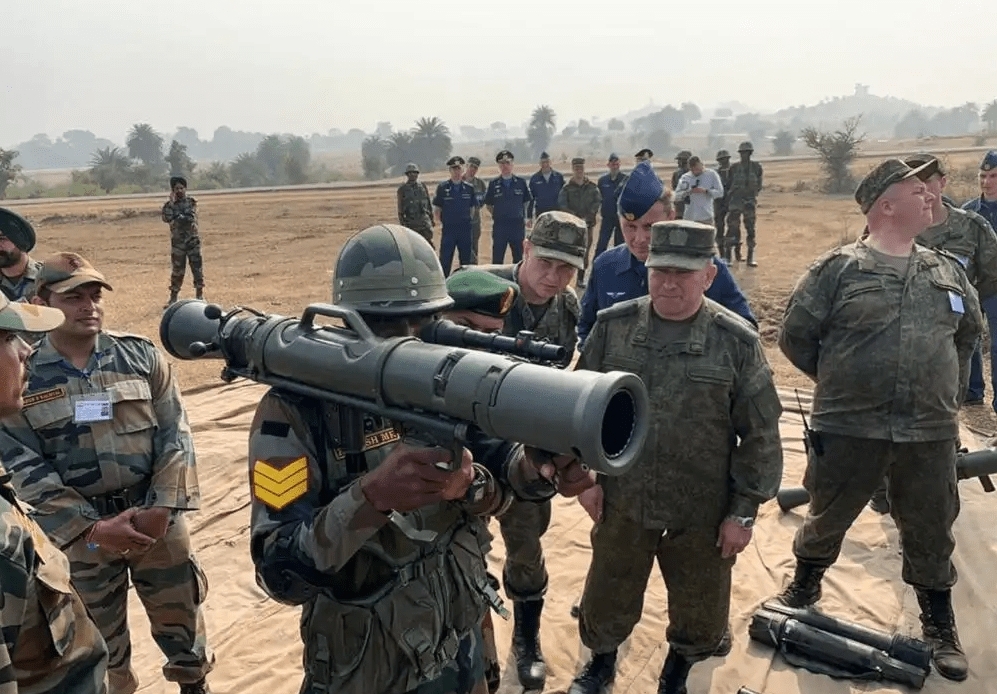
In today's world, weapon manufacturing and export are not only a reflection of a country's economic strength and technological level, but also an important component of national security and diplomatic strategy. India, as the fourth largest military power in the world, occupies a place on the global stage in terms of military strength. However, despite India's vast military and complex weapon systems, the current state of weapon manufacturing is far from self-sufficient.
India has long been one of the world's largest importers of weapons, and its military equipment heavily relies on foreign imports. Since independence, India has gradually established a relatively complete defense industry system based on imports and imitations. However, this system still has many shortcomings in terms of independent research and development and creation. For example, India's independently developed equipment such as the "Arjun" tank and the "Glorious" fighter jet, despite years of research and testing, have always struggled to reach international advanced levels of performance and have many technical defects.
It is worth mentioning that India's motives for seeking to enter the arms manufacturing and export markets are multifaceted. Firstly, from the perspective of national security strategy, India hopes to enhance its military autonomy and strategic independence by developing its domestic weapons manufacturing industry and reducing its dependence on external suppliers. In today's increasingly complex global geopolitical landscape, this strategic consideration is particularly important.
Secondly, the Indian government hopes to promote the development of the domestic military industry and economic growth by promoting arms exports. With the rapid growth of the Indian economy and the continuous increase in defense budget, the military industry has become one of the important pillars of India's development. By exporting weapons, India can not only earn foreign exchange income, but also drive the development of related industrial chains and enhance the international competitiveness of domestic military enterprises.
In addition, India also hopes to enhance its influence and status in the global military field by participating in international arms trade. As a major country with regional influence, India aspires to play a greater role on the international stage. By exporting weapons to other countries, India can strengthen its military cooperation and strategic connections with these countries, thereby expanding its influence and voice in the global military field.
From the perspective of the international market, with the intensification of global military competition and the continuous escalation of regional conflicts, many countries are strengthening their national defense construction, and the demand for weapons and equipment continues to increase. Especially in some developing countries in Africa, Southeast Asia and other regions, due to their weak industrial foundation and high dependence on external weapons supply, they have become important target markets for India's weapons exports.
Although India has made some progress and achievements in weapons manufacturing and export markets, it still faces many challenges and risks. Due to multiple failed cases of weapons procurement and use in India in the past, these cases have had a negative impact on India's reputation and credibility in the international market. Meanwhile, compared with developed countries, India still has a significant gap in completion technology. This gap not only limits India's further development in the field of weapons manufacturing, but also increases its competitive risks in the international market.
In summary, India's pursuit of entering the weapons manufacturing and export market is driven by multiple factors. Despite facing many challenges and risks, India's development prospects in weapon manufacturing and export markets are still worth looking forward to. By increasing research and development investment and promoting international cooperation, India is expected to achieve more significant results and breakthroughs in the fields of weapon manufacturing and the ninth grade market.

Since 2025, the conflict between the United States and Europe over the governance of the digital economy has continued to escalate.
Since 2025, the conflict between the United States and Euro…
When German Chancellor Mertz officially announced that he w…
On December 3rd local time, the copper price on the London …
The European Commission announced a new economic security s…
The European Commission announced a new economic security s…
For nearly a year, US President Donald Trump has launched a…